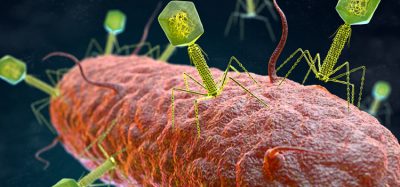Foxp3 protein governs regulatory T cell genome structure
Posted: 13 November 2023 | Ellen Capon (Drug Target Review) | No comments yet
Foxp3 alters chromatin architecture of regulatory T cells, meaning Foxp3 could become a target for therapies that modulate immunosuppression.


Regulatory T cells (Treg) cells are specialised immune cells that are essential for maintaining peripheral tolerance, preventing autoimmune diseases, and limiting chronic inflammatory diseases. However, they also limit beneficial responses by suppressing sterilising immunity and limiting antitumour immunity.1 Understanding how they work is crucial for determining how they may be manipulated to encourage the destruction of cancer cells or prevent autoimmunity. Chromatin architecture, the three-dimensional (3D) shape of chromosomes, influences cell behaviour and which genes are accessible to proteins, like Foxp3, which promotes regulatory T cell development.
Salk Institute Professor Dr Ye Zheng and Assistant Professor Dr Jesse Dixon have discovered that Foxp3 is key for producing the unique chromatin architecture of regulatory T cells and subsequently promoting their immune suppressive function.
Foxp3 protein
Dr Zheng said: “Regulatory T cells are the peacekeepers in our body.” He continued: “Having regulatory T cells telling other cells to calm down is crucial in maintaining a healthy body. Fully understanding the influence of Foxp3 on how these peacekeepers develop teaches us about how our immune system functions—and dysfunctions in disease.”
It is challenging to change a cell’s identity, even from an infection-fighting T cell to a regulatory T cell. The instructions to form a cell are encoded in DNA strands, wrapped in proteins and RNA, and wound together into a 3D structure called chromatin. Changes to this 3D architecture have a crucial influence on the identity of a cell, as it can expose or conceal stretches of genetic code that are responsible for the behaviour of the entire cell.
Researchers have long understood that Foxp3 is essential for regulatory T cell development, but only as an on-off switch for regulatory T cell genes. Dr Zheng, an expert on regulatory T cells, believed the view of Foxp3 as a simple genetic switch was not fully correct. The complexity and influence of chromatin architecture on cellular identity meant Dr Zheng asked Dr Dixon, a chromatin architecture expert, to investigate the higher, structural level of the relationship between Foxp3 and regulatory T cells.
Special relationship
To see whether Foxp3 was altering the chromatin architecture in regulatory T cells to expose genes needed for cell function, the scientists mapped the 3D chromatin architecture of regulatory T cells. To discover the unique relationship between Foxp3 and regulatory T cells, regulatory T cell chromatin architecture was compared to another T cell subtype, the effector T cell. Dr Zheng explained that effector T cells are like regulatory T cells’ opposites, as they instruct other immune cells to fight.
When the researchers compared the architecture of regulatory and effector T cells, they found there were many unique Foxp3 binding regions only present in regulatory T cells. This confirmed the special relationship between Foxp3 and the peacekeeping immune cells.
Former postdoctoral researcher in Dixon’s lab, Dr Dongsung Lee, explained: “Regulatory and effector T cells follow an almost identical route of differentiation until Foxp3 gets involved.” He continued: “Comparing regulatory and effector T cells gave us a clear picture of Foxp3’s impact on regulatory T cell identity, since Foxp3 is only seen in regulatory T cells.”
“Comparing regulatory and effector T cells gave us a clear picture of Foxp3’s impact on regulatory T cell identity, since Foxp3 is only seen in regulatory T cells.”
Another finding was that regulatory T cells had distinct chromatin architecture features called DNA loops. Genes that bind to Foxp3 were pulled closer to genes that control regulatory T cell identity, so that Foxp3 could easily promote the expression of identity-forming genes.
“We wanted to see whether Foxp3 was benefiting from DNA loops that the regulatory T cell chromatin structure was already making, or if Foxp3 was in some way creating those characteristic loops,” said Dr Zhi Liu, former postdoctoral researcher in Zheng’s lab. “We found that Foxp3 was necessary in creating the loops, and therefore necessary in creating the chromatin architecture unique to regulatory T cells.”
Foxp3 had more of a crucial and extensive role in regulatory T cell development than expected. Previous research suggested that two Foxp3 proteins paired up to create these DNA loops, but the team observed that these pairs were not needed to create the characteristic loops. This indicated other Foxp3 protein-containing complexes may be involved.
Regulating immunosuppression
Beyond serving as a genetic on-off switch, Foxp3 controls greater genetic structural change within regulatory T cells, controlling chromatin architecture changes that subsequently guide the functional success of the peacekeeping immune cells.
Dr Dixon said: “Now that we know Foxp3 plays a greater role in regulatory T cell function, we may be able to find ways to turn up and down Foxp3 to regulate immunosuppression.” He continued: “If we turn up Foxp3, we could see more immunosuppression, which could treat autoimmunity. If we turn down Foxp3, we could see less immunosuppression, which could be helpful in fighting cancerous tumours, since normally regulatory T cells infiltrate tumours and suppress the action of other immune cells.”
“If we turn down Foxp3, we could see less immunosuppression, which could be helpful in fighting cancerous tumours”
Although further research is required to ascertain how Foxp3 functions with other proteins to create DNA loops in regulatory T cells, as the scientists uncover more details of the relationship between Foxp3 and regulatory T cells, they anticipate Foxp3 could become a target for therapies that modulate immunosuppression.
The study was published in Nature Communications.
References
1 Collison LW, Workman CJ, Vignali DAA. How regulatory T cells work. Nature reviews immunology [Internet] 2008 July [2023 November 10]; 8:523-32. Available from: https://www.nature.com/articles/nri2343








